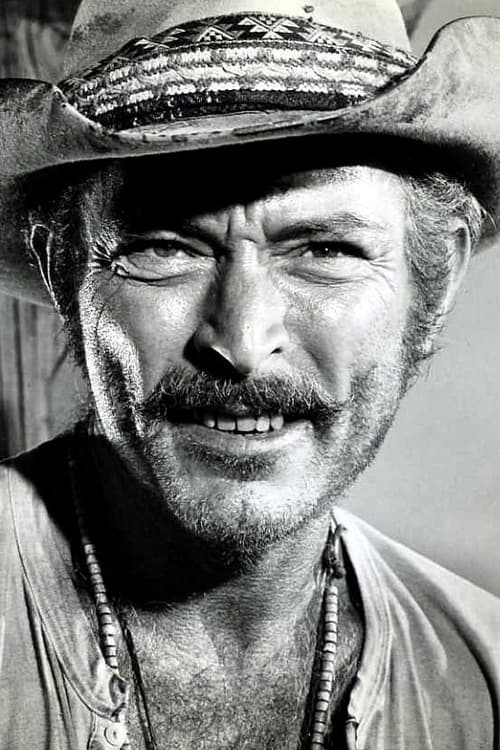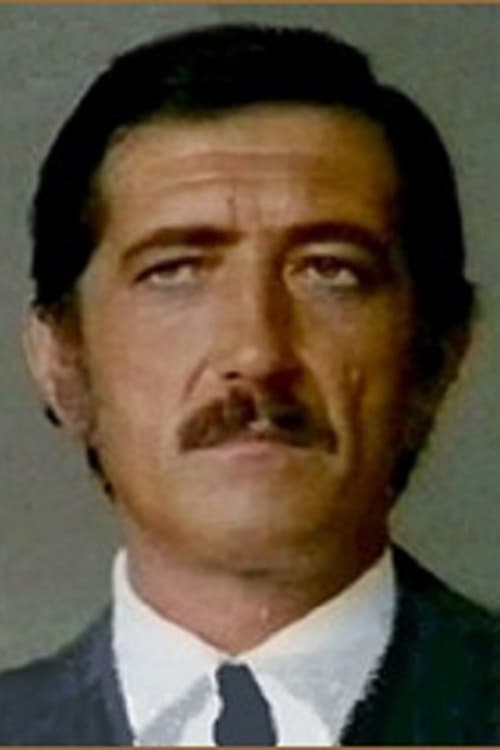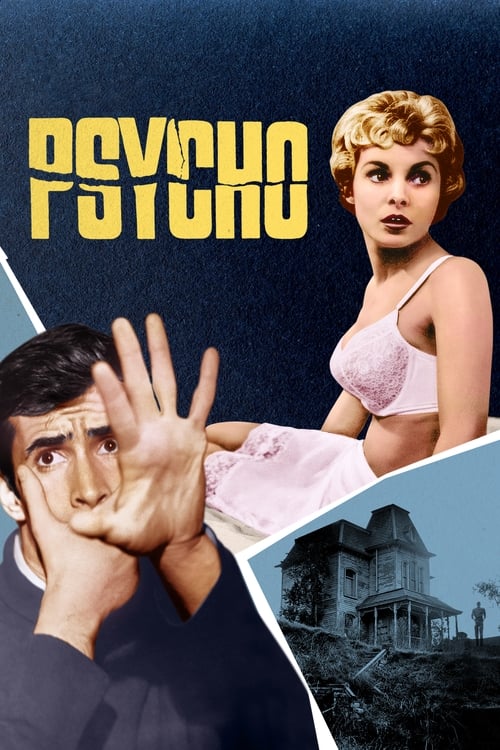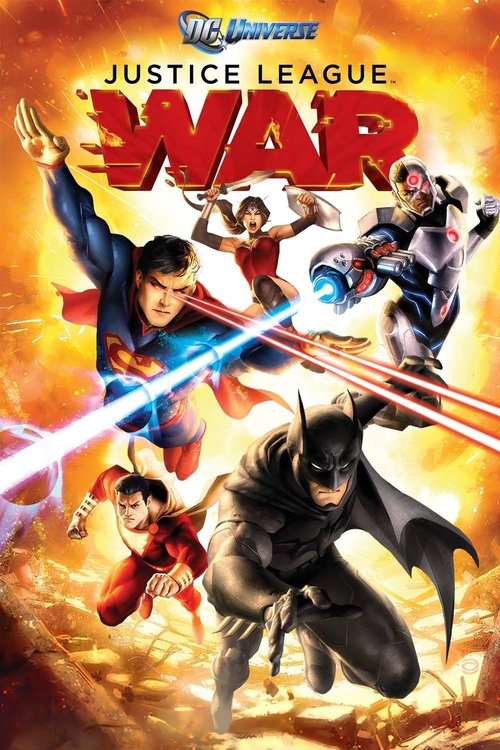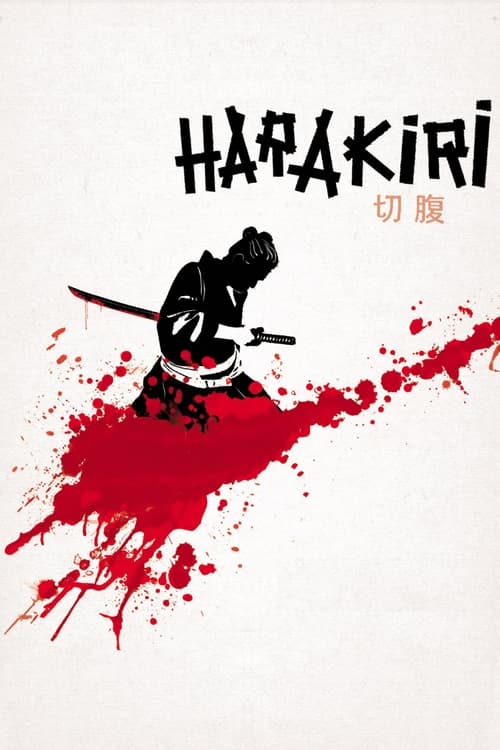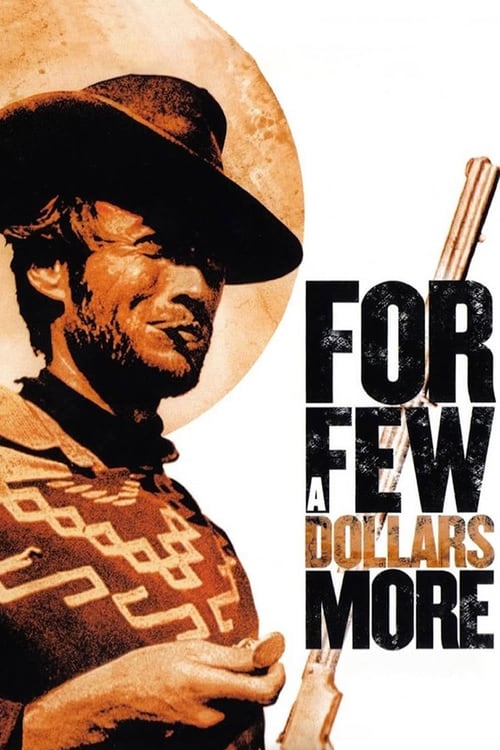
For a Few Dollars More
Two bounty hunters both pursue a brutal and sadistic bandit El Indio who has a massive bounty on his head.
Dialogues from Movie For a Few Dollars More
Quotes from Movie For a Few Dollars More
Sound Tracks from For a Few Dollars More by Ennio Morricone
For a Few Dollars More
For a Few Dollars More by Ennio Morricone, Main theme throughout the film
The Vice of Killing
The Vice of Killing by Ennio Morricone, Played during intense confrontation sequences
Aces High
Aces High by Ennio Morricone, Used during key action scenes
Download App
Memorable Scenes from Movie For a Few Dollars More
The Duel at Sunrise
In a quiet desert landscape, two gunmen, Colonel Mortimer and El Indio, face each other as the sun rises behind them. The tension builds slowly as each man prepares to draw his weapon. The camera pans between their faces, showing their determination and resolve. Just then, Mortimer swiftly draws his gun and shoots. The dust settles, revealing Indio wounded but not defeated. This moment is pivotal because it establishes the relentless nature of their rivalry and sets the stage for their upcoming encounters. Mortimer, driven by revenge for his sister's death, finally confronts the man who wronged him. The aftermath sees a deeper motivation for revenge brewing in Mortimer, shaping his character as a relentless hunter of justice. This scene evokes a mix of excitement and fear, showcasing the brutal nature of their duel while I conjure feelings of tension in viewers as they await the outcome. Through this scene, the film effectively highlights themes of vengeance and justice, with this duel marking a critical shift in Mortimer's journey.
Context: Mortimer is hunting for El Indio, who killed his sister. This moment of confrontation symbolizes their personal vendetta.
The Last Confrontation
In the film’s climax, Mortimer and Son of Indio discuss their plans in a tense encounter. Mortimer reveals his true intentions, and the tense dialogue creates a dramatic standoff between the two. The visuals capture the dichotomy of light and shadow, symbolizing the battle between good and evil. The moment peaks when Mortimer draws his gun first, shocking everyone and displaying his determination. This confrontation changes the trajectory of the story, forcing audience members to reconsider their allegiances and sympathies. Emotions run high as viewers feel a mixture of tension, adrenaline, and a sense of impending justice. The dialogue showcases clever wordplay and moral complexity, inviting viewers to reflect on themes of revenge and honor. This scene stands out because it intertwines action with philosophy, making it unforgettable in cinematic history.
Context: The climax involves Mortimer facing off against Indio's son, channeling revenge for personal losses and symbolizing an end to the cycle of violence.
The Locket Revelation
During a quiet moment in the film, Mortimer examines a locket belonging to his deceased sister. As he holds it, flashbacks of happier times flood the screen, showing moments from his sister's life alongside the dark reality of her death. The pivotal moment occurs when Mortimer's anguish and nostalgia bubble to the surface, evoking tears mixed with rage. This moment reshapes Mortimer, deepening his quest for vengeance while highlighting the emotional backstory driving his actions. Viewers are left feeling a deep sadness for Mortimer, torn between love and revenge. This scene emphasizes the personal stakes involved and reflects the costs of living a life centered around vengeance, making it a poignant highlight in the film.
Context: The locket serves as a symbol of Mortimer’s lost love and his driving force behind the quest for justice against El Indio.
The Standoff in the Town
In a tense standoff between Mortimer, Indio, and their gang, the atmosphere is thick with tension as they circle each other in a dusty town. The music builds, heightening the anticipation of conflict. The pivotal moment arrives when Mortimer uncovers a strategy, relying on his cunning to outsmart the gang instead of brute force. The visuals contrast the vast open spaces with the close-ups of the three central characters, emphasizing the stakes involved in their clash. After this scene, Mortimer’s intellect is showcased as he takes the upper hand, shifting the viewers’ perceptions of traditional heroism. This moment elicits excitement and nervousness, reflecting the unpredictability of the gunfight ahead. It underscores the film’s theme of wits versus sheer strength, leaving a lasting impression in a remarkable showdown.
Context: Mortimer and Indio's gang represent opposing forces in a classic Western showdown, showcasing cleverness as a form of power.
The Train Heist
In an elaborate plan, El Indio and his gang attempt to rob a train filled with gold. The buildup includes detailed preparations and suspenseful anticipation of their success. The pivotal moment happens when they board the train, and the tension spikes as they realize their plan is more complicated than expected. The cinematography captures the chaos of the robbery and the desperation on all sides, leading to unexpected consequences. The aftermath reveals the consequences of their greed — the heist fails, indicating a deeper understanding of fate’s unpredictability. Viewers experience a rollercoaster of excitement and shock as they witness the gang’s downfall. The scene highlights themes of greed and consequences, making it memorable as the unfolding chaos plays into the themes of the narrative.
Context: The train heist is a critical point in the story where the stakes for Indio and his crew are raised, showcasing their desperate measures for wealth.
Mortimer's Plan
In a tense moment, Mortimer outlines his plan to counter El Indio's gang. Surrounded by shadows at dusk, he lays out the intricacies of his strategy to a confused audience. The exact point of tension peaks when Mortimer's confidence contrasts with the gang's earlier bravado, affirming his position as a master tactician. The aftermath shifts the story's momentum as Mortimer’s plan unfolds, adapting to changing scenarios and highlighting his intelligence. This scene sparks a mix of intrigue and admiration in viewers as they root for Mortimer, resonating with those who appreciate brains over brute force. It serves as a reminder of the careful planning behind every successful venture in the world of crime, adding layers to Mortimer’s character.
Context: Mortimer devises a strategy to outsmart Indio's gang, showcasing his cunning and insightful nature.
The Final Showdown
The tension hangs thick as Mortimer stands against El Indio in a dramatic final showdown. This moment is built upon their previous encounters, emotions running high as both characters carry the weight of their shared history. The pivotal moment occurs when El Indio’s bravado breaks, and Mortimer pulls the trigger after some tense seconds of silence. The visuals portray an intense juxtaposition of their gunfight against the backdrop of a haunting sunset, adding to the emotional stakes. The aftermath marks a significant shift in Mortimer’s character, indicating a hard-won closure for his sister's death. Viewers are left feeling a profound catharsis as they witness a blend of sorrow and triumph in Mortimer’s victory. This scene echoes the overarching themes of justice and revenge, making it a climactic moment in cinematic history.
Context: The final showdown symbolizes Mortimer's ultimate confrontation with revenge, culminating in a tragic end to his quest.
The Introduction of Indio
When El Indio first appears onscreen, there’s an immediate sense of danger and intrigue. His entrance is marked by eerie music and a subtle slow-motion effect as he moves confidently, surrounded by his gang. The pivotal moment occurs when he demonstrates his quick-draw ability by proving how efficient a killer he is. The sharpness of his actions combined with the shocked expressions of the townsfolk highlights Indio as a formidable antagonist. After this moment, his character is firmly established as a threat, radically shifting the viewer's understanding of the narrative's stakes. Emotions of dread and anticipation fill the audience, setting them on edge and investing them in the storyline. Indio's introduction is pivotal, as it encapsulates the film’s themes of survival and lawlessness, forever marking him as a memorable villain.
Context: El Indio's introduction serves to establish him as a lethal antagonist, setting the tone for the conflict ahead.
The Trap is Set
As Mortimer plots against Indio, viewers are taken into his intricate preparations, laying out a trap for the gang. The buildup creates an atmosphere full of suspense, as Mortimer reveals his cunning mind while organizing various elements into place. The pivotal moment happens when he finalizes his setup, and there’s a palpable sense of unease in the air. The impact of this scene is felt in how it showcases Mortimer’s strategic thinking — an essential contrast to the more chaotic methods of Indio's crew. Emotions of anxious excitement build within viewers, eager to see if Mortimer’s plan will work. Ultimately, this moment emphasizes the importance of brains over brawn and develops Mortimer's character into a tactical hero, proving memorable for its clever execution.
Context: Mortimer's cunning strategy sets the stage for future confrontations with Indio, marking a turning point in the narrative.
The Reveal of Mortimer’s Past
In a quiet and intimate setting, Mortimer confides in a companion about the traumatic loss of his sister at Indio's hands. This moment is heavy with emotional weight as he shares painful memories. The pivotal moment is when Mortimer recalls the specific details of his sister’s death, showcasing vulnerability in stark contrast to his hardened exterior. What follows influences the overall narrative by forging a deeper connection between Mortimer and the audience, revealing the personal stakes behind his quest for vengeance. Viewers often feel heartbreak as Mortimer's pain resonates, painting him as a tragic hero driven by loss. The emotional depth gained is significant, making it a strikingly memorable scene that contributes fundamentally to the character’s motivations.
Context: This revelation provides context for Mortimer's motivations, illustrating the personal toll vengeance takes on him.
The Ambush
Mortimer, anticipating Indio's gang’s next move, sets an ambush that unfolds with exceptional tension. As the gang approaches, the quiet ambiance is punctuated by the distant thud of hooves, building suspense. The pivotal moment strikes when Mortimer signals for the attack, and chaos erupts, revealing his strategic brilliance. It transforms the atmosphere into one of extreme action where viewers are left guessing the outcome. The aftermath of the ambush evolves the story, showcasing the surgical precision of Mortimer’s plan while further establishing Indio as a formidable foe. Emotions fluctuate between exhilaration and disbelief as viewers witness the shrewd maneuvering unfold. This effective use of tension and action resonates deeply, making it significant in demonstrating that intellect can reign supreme in dire situations.
Context: The ambush strategically puts Mortimer at an advantage in the ongoing conflict against Indio, showcasing his tactical prowess.
The Betrayal
In a surprising twist, a close ally of Mortimer's betrays him, leading to unexpected consequences. The buildup showcases camaraderie and trust that ultimately crumbled in a dramatic reveal. The betrayal is punctuated by an emotional confrontation packed with sharp dialogue, leaving Mortimer reeling. The sheer shock of the moment serves as the turning point that leaves Mortimer vulnerable and questioning his alliances. After this moment, the dynamic of the story shifts as Mortimer learns that trust can be as fragile as life itself. Viewers may experience a mix of shock, betrayal, and heartbreak alongside Mortimer, emphasizing the unpredictability of human relationships. This scene stands out due to its betrayals intertwining beautifully with themes of loyalty and deception.
Context: The betrayal showcases the theme of misplaced trust that continues to run through the narrative, impacting Mortimer's evolution.
The Serene Foreshadowing
Early in the film, serene, beautiful landscapes contrast with the tension to come, establishing a sense of foreboding. Mortimer rides through peaceful terrain, yet the underlying score hints at the violence soon to arrive. This moment is pivotal as it lingers in the audience’s minds, giving a false sense of security. The quiet backdrop evokes emotions of nostalgia and calmness, creating tension under the tranquility. As viewers reflect, they see how such serene moments are fleeting in a land filled with violence, adding depth to the narrative. It reminds the audience that beauty often juxtaposes darkness, making it a unique and memorable moment in cinematic history.
Context: The serene visuals set the stage for the chaos to follow, reminding viewers of the stark realities of the Wild West.
Indio’s Manipulation
El Indio showcases his manipulative prowess when he subtly influences his gang members, showcasing his leadership skills. The buildup showcases the group’s dynamics, where Indio’s charisma both inspires loyalty and fear. The pivotal moment occurs as he gives a fervent speech, igniting a sense of purpose while shrouded in menace. The aftermath signifies his role as the mastermind behind the chaos, solidifying his villainous image. Emotions oscillate between awe and fear for viewers who become entranced by Indio’s complex character. This moment remains significant, cementing themes of power and manipulation in the Wild West’s lawlessness.
Context: Indio’s ability to sway his men exemplifies his dangerous nature, emphasizing the cunning and brutality of his character.
The Gold Mine Discovery
The moment El Indio first discovers the location of a hidden gold mine is filled with excitement and ambition. The buildup builds anticipation among the gang, hinting that fortune is within their grasp. The pivotal moment occurs as they discover the mine, with their eyes wide in disbelief. The visuals reflect their shock and ecstasy, shaped by golden hues reminiscent of their dreams. However, the aftermath reveals how greed leads to internal conflict within the gang, eventually tearing them apart. This discovery evokes excitement and a sense of impending doom among viewers, who realize that wealth can sow destruction. The scene is significant in illustrating the themes of ambition and the corruptive nature of greed, setting the stage for future conflicts.
Context: The treasure discovery acts as a catalyst for the plot's escalation, pushing characters to their limits when greed arises.
The Moment of Choice
Mortimer must face a moral dilemma when he’s offered a chance at wealth at the expense of justice. The buildup features a tense conversation with a character who embodies corruption but promises riches. The pivotal moment occurs when Mortimer reflects deeply, caught between personal gain and revenge. The heavy silence amplifies the stakes, culminating in a tension-filled decision. After this moment, viewers witness Mortimer grappling with his values, highlighting his strong moral compass. The emotions of conflict and resolution feel palpable for the audience, resonating with those who have faced difficult choices. It stands out as a monumental point in the film, emphasizing the cost of integrity against temptation.
Context: The choice encapsulates Mortimer's internal struggle between his needs and his thirst for vengeance, enriching his character arc.
The Final Farewell
In a powerful closing moment, Mortimer stands at his sister’s grave, paying his respects. The buildup leads to his deep emotional reflection on loss and finality. The pivotal moment arrives as he places a flower on the grave, solemnly vowing to honor her memory through his actions. The visuals are poignant, capturing Mortimer’s grief against the serene backdrop of the graveyard. The aftermath reshapes his motivations, hinting at redemption or peace after a long and violent journey. Viewers often experience a sense of catharsis mixed with sorrow, feeling the depth of Mortimer’s love and loss. This scene resonates deeply, reinforcing the film’s themes of love, loss, and honor, solidifying its place in cinematic memory.
Context: This moment encapsulates Mortimer’s emotional journey and signifies closure to his quest, highlighting the personal stakes involved in his vengeance.
Download App



